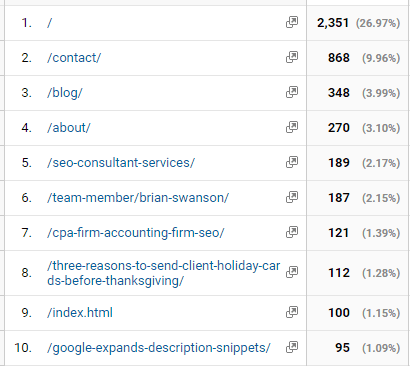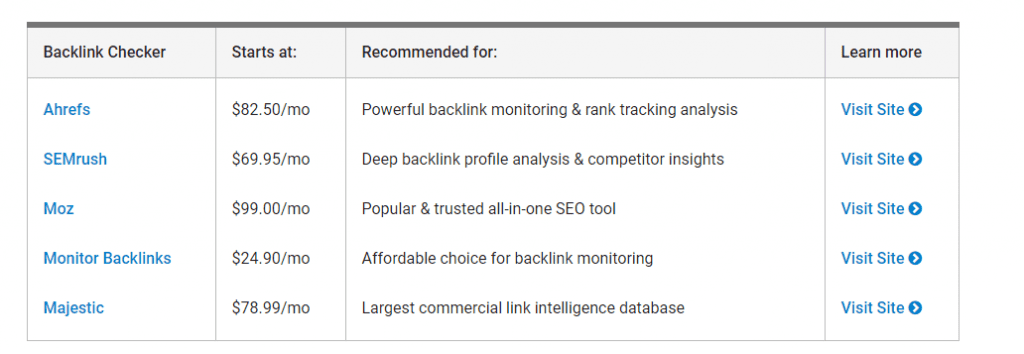SEO Guides, Tips & More!
Learn from Our Experience
What Should I Do with Old Blog Posts?
The world of search engine marketing and search engine optimization (SEO) is constantly changing. According to Moz, a leading SEO software development company, there have been more than 12 major Google algorithm updates which impact how a firm’s site is indexed and ranked. Given this moving target, it’s no surprise that marketers are often confused about various aspects of content marketing, SEO and website management. It’s difficult to understand what exactly Google wants you to do. A common question we are asked is about old blog posts and website content. On one hand, Google likes to see “older” content on websites because it indicates authority. On the other hand, however, they want fresh content addressing relevant issues and trends impacting the firm’s clients and prospects. It leaves many marketers wondering, what should I do with old blog posts? To help our audience understand the answer and impact on their site, FlashPoint Marketing has provided a summary of steps to help you identify what to do.
Check the Data
If you are a data-driven person, it will help you to run a report to understand what content is performing. To access this report, click on the Behavior tab within your Google Analytics account. A drop-down will appear and from there you can select “Overview”. This will give you a high-level overview of the most frequently visited content on the blog for the selected time period.

Before reviewing the report it’s important to identify the metrics by which you will identify high performing content. The most popular include goal conversion rate (assuming it’s defined), time on page, bounce rate, social shares and finally backlinks (below I discuss how to measure backlinks). With this information, it will be easy to understand which posts are performing and which are not. The data tells us everything!
Other Content Considerations
While the data will reveal what should be deleted there may also be some posts which fall into a “gray zone”. In other words, they aren’t performing as you would expect, but they are also not a clear delete option either. When evaluating what to do with these blog posts, consider the following:
- Relevance – Often old blog posts don’t garner a lot of attention because the information contained is not relevant anymore. In the world of accounting, this happens all the time. A new tax law was passed that nullifies the old rules or a new standard was issued which changes how tax planning is conducted. Whatever the case, if the post doesn’t have a high degree of relevance it makes the decision to delete it much easier.
- Beneficial – It’s also important to consider if the post is beneficial to prospects and clients. Does it help them address a challenge or issue they are facing in their business? Does it offer a unique or interesting take on an accounting or tax topics? If the answer is “yes” it may be worth keeping, or better yet updating and revising it. If the answer is “no”, deleting it becomes that much easier.
- Issues – It’s important to assess whether the content is causing issues with your paid or organic SEO efforts. Examples of issues may include being tagged as duplicate content, contains large portions of text that were plagiarized or creates a legal liability for the firm. We have worked with many firms and companies that take a long and hard look at content during and after a lawsuit to ensure certain wording or messages are edited out. Whatever the reason, if the posts are causing issues it makes it easier to delete them.
What About Incoming Links?
Incoming links are essential to an effective SEO program. The last thing you want is to delete a blog post with a high number of incoming links. While it is reasonable to assume content, which doesn’t get a high volume of traffic nor meet the content considerations outlined above would not have a lot of incoming links, it’s still important to check. There are free backlink checkers available but often provide limited or incomplete information (Ahrefs offers a nice free backlink checker tool). Paid tools often provide a more complete analysis and even let you assess competitor sites. (Below is a summary of the paid tools with a brief explanation of each from Howtogetonline.com). Whatever tool you decide to use it’s important to ensure blog posts that have a high number of incoming links are not simply thrown away.

301 Redirects – Deleting Blog Posts
If an old blog post has been marked for deletion, then it’s important to see if there is another post on a similar topic (preferably more recent and relevant) to direct site visitors to view. If so, I suggest implementing a 301 redirect from the deleted post’s URL to the related post’s URL. This ensures the site visitor will still get access to the information they are looking for and it provides the search engines with notice the post has been permanently moved. (For a brief explanation of 301 redirects and how they work check out this YouTube video.)
Refreshing Old Blog Posts
While there will certainly be blog posts that are eligible for deletion the majority can and should be updated or repurposed for other uses. For most marketers, the low hanging opportunity is to revisit the post and see what can be changed/updated. Our clients often revisit the topic with the original blog author to ask them to write an update or they get information on what’s new and incorporate it into the blog. (Problogger offers several good ideas to follow when refreshing old posts.) Once the blog is refreshed, publish it as a new post with both the original content and then the update (highlighted with an editor’s note – see below) which is featured so readers know the information is current and of value.

In Perspective
Old blog posts are important and represent an opportunity to re-engage your clients, prospects, and others with your thought leadership. Continue to revisit old content and find ways to make your initial content investment pay off.

